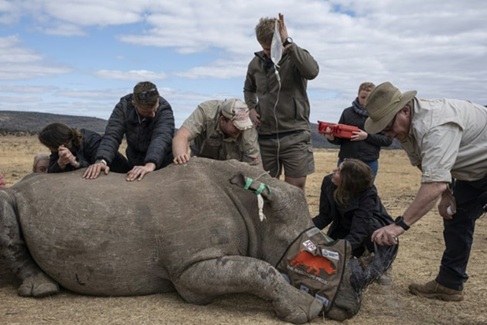| (Prelims: Current Affairs) |
Why in News ?
Radioactive isotopes are being injected into the horns of rhinos in Africa to prevent poaching. The project is being led by researchers from the University of the Witwatersrand, South Africa.

Key Features of the Project
- Objective: To detect rhino horns at international borders and reduce their commercial value.
- Method: Small amounts of radioactive isotopes are injected into the horns under the supervision of a veterinarian.
- Detection: The radioactive material can be identified by standard scanners used at airports, ports and border checkpoints.
- Safety: The level of isotopes is below the limit harmful to rhinos or the ecosystem, but high enough to be detected.
- Deterrent factors: Buyers in illegal markets may avoid buying and selling horns due to potential legal risks and health concerns.
Significance
- Conservation strategy: An innovative, technology-driven approach in line with the objectives of CITES (Convention on International Trade in Endangered Species).
- Wildlife protection laws: Complementary to measures under India’s Wildlife Protection Act, 1972 and global anti-poaching frameworks.
- Transnational crime control: Helpful in combating wildlife trafficking.
- Aligned with Sustainable Development Goals: Supports SDG 15 (Life on Land) and SDG 16 (Peace, Justice and Strong Institutions).
Potential challenges
- Technical and logistical feasibility for large-scale deployment.
- Ethical debate on animal intervention.
- Potential shift of poachers to other species.